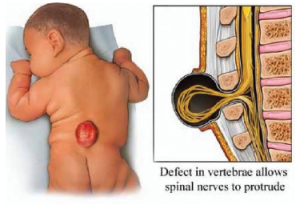WHAT IS DEVELOPMENTAL PATTERNS
Developmental patterns and milestones are certain skills, like babbling, crawling, and reading, that we expect to see a child learn to do as he or she grows into an adult childhood age group has unique developmental milestones. And there are specific age ranges of when we expect certain milestone to appear.
A child is developing normally when he or she does or behaves in the way he or she should behave at that particular age. Normal developmental patterns implies that the child is growing and developing normally exhibiting the normal skills and behaviors at each particular age that he/she is supposed to. Each age of a child comes with an age appropriate patterns of skills and behaviours.
Below is a summary of what to expect in a child at every developing age.
This week marks one of the crucial developments stages in your baby which you might just miss. Your little one begins to gain some control over head movements, though not completely. If you hold your baby upright supporting the abdomen and back, she will be able to hold her head straight, albeit briefly.
AT 2 MONTHS
Physical and motor-skill markers:
Closing of soft spot at the back of the head (posterior fontanelle )
Several newborn reflexes , such as the stepping reflex (baby appears to dance or step when placed upright on solid surface) and grasp reflex (grasping a finger), disappear
Several newborn reflexes , such as the stepping reflex (baby appears to dance or step when placed upright on solid surface) and grasp reflex (grasping a finger), disappear
When on stomach, able to lift head almost 45 degrees
Less flexing of the arms and legs while lying on the stomach
AT 4 MONTHS
Be able to sit straight if propped up
Raise head 90 degrees when placed on stomach
Be able to roll from front to back
Hold and play with object
Play with a rattle when it's placed in their hands, but won't be able to pick it up if dropped
Be able to grasp a rattle with both hands
Be able to place objects in the mouth
AT 6 MONTHS
Able to hold almost all weight when supported in a standing position
Able to transfer objects from one hand to the other
Able to lift chest and head while on stomach, holding the weight on hands (often occurs by 4 months)
Able to pick up a dropped object
Able to roll from back to stomach (by 7 months)
Able to sit in a high chair with a straight back
Able to sit on the floor with lower back support
Beginning of teething
AT 9 MONTHS
Puts hands forward when the head is pointed to the ground (parachute reflex) to protect self from falling
Is able to crawl
Sits for long periods
Pulls self to standing position
Reaches for objects while sitting
Bangs objects together
Can grasp objects between the tip of the thumb and index finger
Feeds self with fingers
AT 12 MONTHS
Have a head circumference equal to that of their chest
Have 1 to 8 teeth
Stand without holding on to anything
Walk alone or when holding one hand
Sit down without help
Bang 2 blocks together
Turn through the pages of a book by flipping many pages at a time
Pick up a small object using the tip of their thumb and index finger
AT 18 MONTHS(1 YEAR 6 MONTHS)
Is able to control the muscles used to urinate and have bowel movements, but may not be ready to use the toilet
Runs stiffly and falls often
Is able to get onto small chairs without help
Walks up stairs while holding on with one hand
Can build a tower of 2 to 4 blocks
Can use a spoon and cup with help to feed self
Imitates scribbling
Can turn 2 or 3 pages of a book at a time
AT 2 YEARS(24 MONTHS)
Can build a tower of 6 to 7 cubes.
Can kick a ball without losing balance.
Can pick up objects while standing, without losing balance. (This often occurs by 15 months. It is a cause for concern if not seen by 2 years.)
Can run with better coordination . (May still have a wide stance.)
May be ready for toilet training.
Should have the first 16 teeth, but the actual number of teeth can vary widely.
At 24 months, will reach about half final adult height
WHAT ARE ABNORMAL DEVELOPMENTAL PATTERNS IN CHILDREN
CAUSES OF DELAY IN A CHILDS DEVELOPMENTAL PATTERNS
A genetic defect, such as Down syndrome
Fetal alcohol syndrome , caused by a mother drinking alcohol during pregnancy
Fragile X syndrome , an inherited type of cognitive impairment
Severe medical problems developing soon after birth, often associated with prematurity
Ataxia, a defect that impairs muscle coordination
Cerebral palsy, a condition caused by brain damage before birth
Cognitive delays
Myopathy, a disease of the muscles
Problems with vision
Spina bifida , a genetic condition causing partial or total paralysis of the lower part of the body
WHAT TO DO IF YOU OBSERVE A DELAY IN DEVELOPMENT PATTERN OF YOUR CHILD
Visit a therapist ..a physiotherapist and an occupational therapist to help your child learn the skills appropriate for their ages....
Visit us for more blog post@hltherapy.blogspot.com
Call us on +2348065152282
Nigeria
Thanks

















































